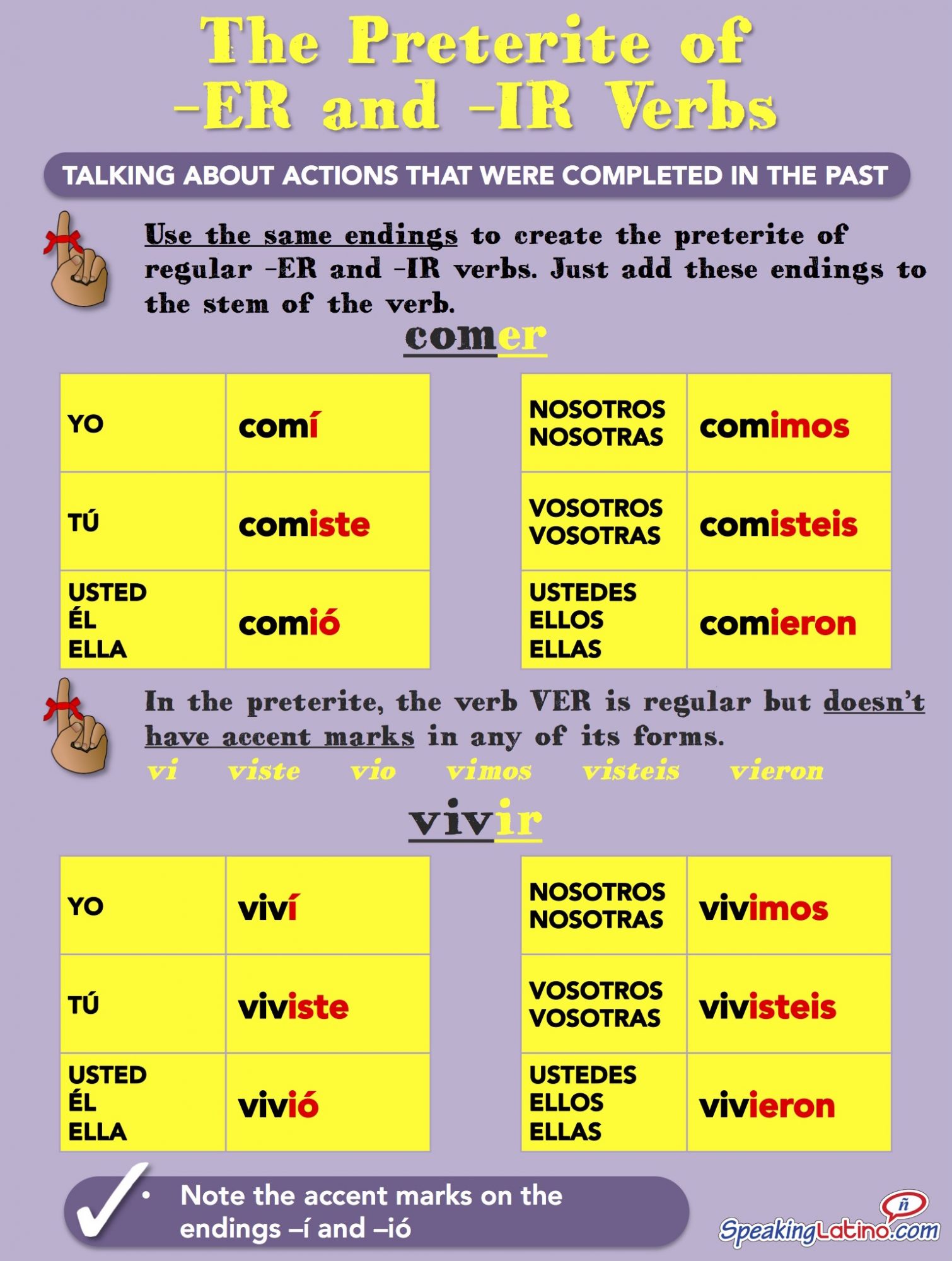

You just have to change the infinitive ending -ar into the gerund ending -ando.
Ar verb endings in spanish preterite how to#
Now, that you remember this part, let’s learn how to make a gerund with the -ar verbs. Let’s review the conjugation of the verb estar in the present simple tense: SPANISH To construct the present progressive tense in Spanish, you need to join a conjugated verb estar with a gerund. It’s like the present continuous in English (“I am writing”). You use it only for actions happening right now, or around now. The present progressive is another tense to talk about present actions in Spanish.

Conjugation of Regular -AR Verbs in the Present Progressive I play with the ball, and you play with the rope. Yo juego con la pelota y tu juegas con la cuerda. In this verb, the u from the stem changes to ue. This will be your favorite “group.” There is only one verb here- jugar (to play). SPANISHĬan you try conjugating another verb in this group? Try soñar (to dream) or choose another from the -ar verb list in Spanish at the end. In this group, the o in the last syllable of the stem, changes to ue. You’ll find more on the list of -ar verbs in Spanish at the end of the article. Other verbs that follow the same stem change are for example cerrar (to close), nevar (to snow), comenzar (to start). SPANISHĭid you notice that there is no stem change in nosotros? You’re right, the first person plural is always regular. I’ll show you how it looks like with the verb pensar (to think). For these verbs, the letter e in the last syllable of the stem changes to ie. Let’s have a look at three types of stem changes that you’ll find on your list of -ar verbs in Spanish. While they still use the regular tense endings for -ar verbs, there is a small vowel change in the stem. Some present tense verbs from the list of -ar verbs in Spanish undergo a stem change. In the present simple tense, cut out the -ar infinitive endings and substitute them as follows: Present tense endings for -ar verbs SPANISHĬheck out the list of regular -ar verbs in Spanish at the end to get to know more. I love having my coffee while looking at the sea from my terrace. You use the simple present tense to talk about habitual actions, routines, universal truths, things happening now or in the near future, and facts.Īmo tomar mi café mirando el mar desde mi terraza. Why do we call some verbs regular? Because the stem of the verb does not change during the conjugation, only the ending does. Conjugation of Regular -AR Verbs in the Simple Present Tense Take one step at a time, and we can leave it for another occasion. I’ll show you how to conjugate -ar verbs in six different indicative tenses: I could simply give you a list of -ar verbs in Spanish, but it’ll be easier if I split them for you into smaller subgroups. They are the biggest group, and they have the smallest number of irregularities.Įach -ar verb in its infinitive form looks like this:įor example amar(to love), hablar (to speak), comprar(to buy). The -ar verbs are usually the first ones to learn. You learn one, and you know how to conjugate all the others in the same group. You’ll see that dividing the Spanish verbs into three groups will make your life easier. Spanish has only three types of conjugations and you usually learn them in the first lessons: -ar, -er, and -ir. Verb conjugation shows us how a verb changes when we use it with a different grammatical person (I, you, he, she, etc) tense (present, past, future) number (singular, plural) or mood (indicative, subjunctive, imperative).

What is conjugation? If you’re not super interested in grammar and this is your first time learning a foreign language, this concept might be new. I’ll show you how to conjugate regular verbs in most of the tenses, and you’ll also learn how to detect and conjugate irregular -ar verbs.įinally, there is a semi-comprehensive but quite extensive list of -ar verbs in Spanish to help you practice your conjugating skills. I’ll explain what conjugation is and how many types of them you’ll find in Spanish. You’ll quickly understand the idea of conjugation with them, and learning other verbs will be much easier. The -ar verbs are the most common Spanish verbs and with the smallest number of irregularities. If you are at the beginning of your Spanish journey and you want to quickly expand your vocabulary and start using correct grammar, a list of -ar verbs in Spanish is what you need. Maby Olga Put Spanish Grammar 0 comments A Semi-Comprehensive List of -AR Verbs in Spanish


 0 kommentar(er)
0 kommentar(er)
